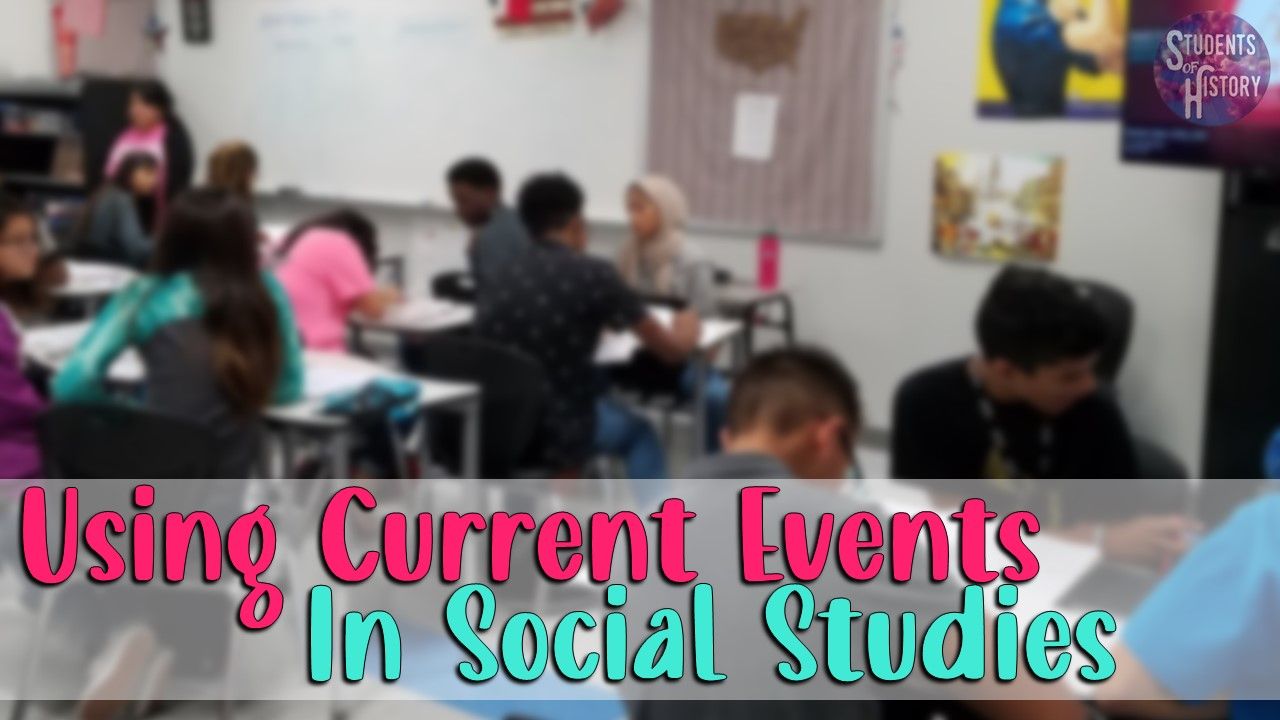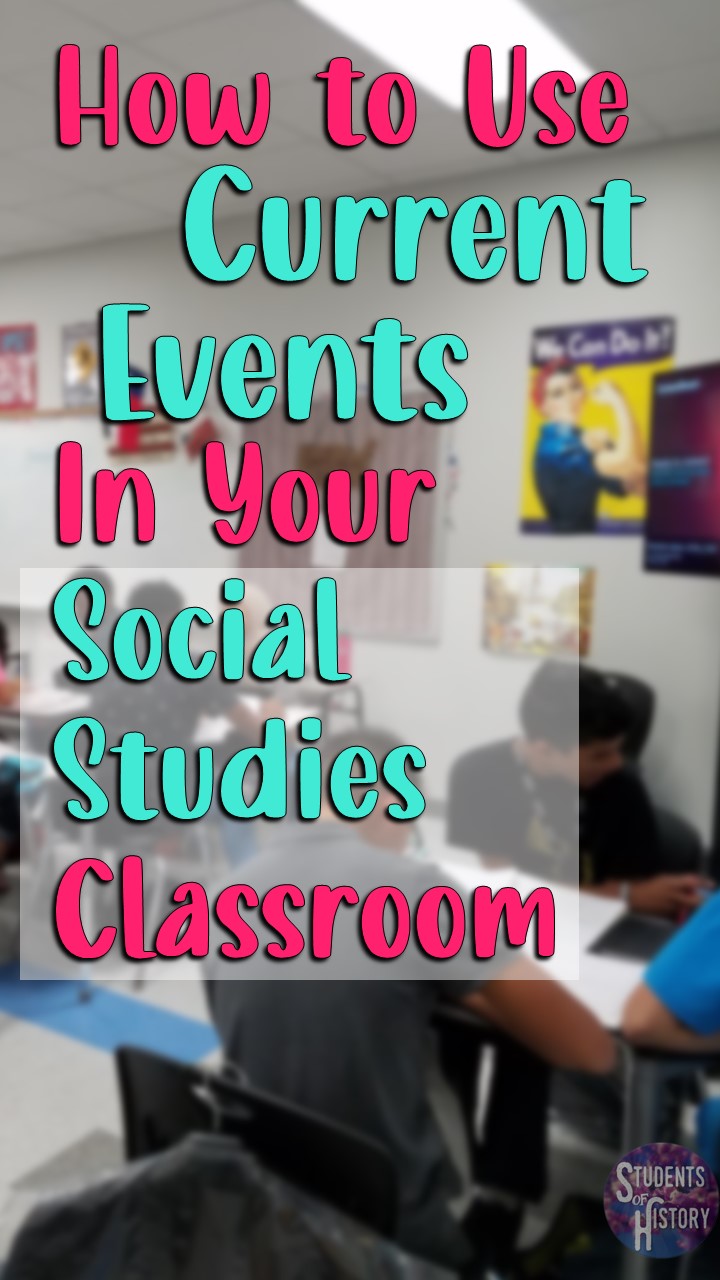5 Ways to Incorporate Current Events into Your Social Studies Classroom

Many teachers avoid bringing current events into the classroom and often for good reason. It's a politically fraught world these days and you don't want to be considered biased or bring up trouble. Some parents are ready to pounce on you for anything.
It's understandable to want to stick to your standards. However, current events are a great way to connect your curriculum to the real world and work on social studies skills.
Incorporating current events into your social studies lessons can also be a great way to engage students and help them see the relevance of the subject to their own lives.
There's many great resources available to you from CNN10 to the Donut that are made specifically for classrooms.
So, I encourage you to try - when relevant - to bring some current events into your lessons.
Here are five simple tips for using effectively covering current events in your classroom:
1) Choose current events that are age-appropriate and align with your curriculum.
It's important to consider the maturity level and interests of your students when selecting current events to discuss.
If you are teaching high school, this likely means that you can broach most news-worthy topics. However, if you're a middle school teacher, there are going to be some things you'll want to steer clear of.
Additionally, look for events that connect to the themes and concepts you're teaching in class. If an event is directly connected to your standards, no one can question why you are talking about it in class.
This is easiest to do in a Civics or American Government classroom. In my curriculum, I include a political cartoon analysis activity in each unit. Students have to find a cartoon that related to our unit (super easy for American Government) and provide a brief explanation of how it connects to our content.
2) Provide context and background information.
Before diving into a discussion of a current event, it's helpful to provide some context and background information. This can help students better understand the event and its significance.
For example, if you're talking about the War in Ukraine or China and Hong Kong, there are longstanding historical relationships there that students likely are not knowledgeable on.
In my World History class, we used this resource on the Kievan Rus' and then connected it to Ukraine's history and current events with Russia's attempts to annex it.
You don't want students to be making judgments on complex current events without background knowledge. However, that presents a great opportunity to teach it and connect to your curriculum!
3) Encourage critical thinking.
Encourage students to think critically about the current event you're discussing. This could involve asking questions such as:
- What are the different perspectives on this issue?
- What are the implications of it?
- How does it connect to what we're learning in class?
A good idea is to provide students with various sources that look at the event from several perspectives. This will also help protect you from accusations of bias.
A great resource you can use bringing in different news sources is this lesson plan on Fake News and the Media.
That can help students better identify good sources from untrustworthy ones.
Another great resource is this set of social studies skills activities.
There's pages on identifying cause & effect, primary vs. secondary sources, and determining fact from opinion that can be helpful for current events.
4) Use a variety of teaching strategies.
When you incorporate current events into your lessons, try to do it in different ways to keep kids engaged.
One week it could be a video, next as stations around the group, group work, pairs, independent readings, hold a debate, responding to a prompt on Google Classroom, creating a timeline of events, etc.
There's many great ways to cover things in your classroom and this way you utilize students' varying skills sets and comfortability levels.
A super simple one is to have students do a "3, 2, 1" after viewing a news clip or reading an article. This means they respond with 3 key takeaways they have, 2 personal reactions or thoughts on it, and 1 question they have.
5) Reflect on the event's impact.
After discussing an current event, be sure to take some time to reflect on its impact.
This could involve discussing the event's long-term effects or considering the possible outcomes of different actions that could have been taken.
Also, help students to see how the event can connect to their lives. The world is so interconnected now that something occurring on the other side of the globe could have ramifications for students here in America.
Overall, bringing these current events into history or social studies classroom can be a fantastic way to engage students and help them see the relevance of your subject to their own lives.
By choosing age-appropriate events, aligning them with your standards, providing context, encouraging critical thinking, and using a variety of teaching strategies, you can help your students better understand and analyze current events and their place in the world.
If you're looking for engaging lessons you can use right away in your classroom, check out my complete curricula for Civics, World, and US History.
They are all standards-based and filled with engaging lessons that can easily connect with current events.
Thanks for stopping by!

Want to try some lessons for free?
Try out some free lesson plans and resources for your social studies classroom!
Don't worry, your information is never shared.